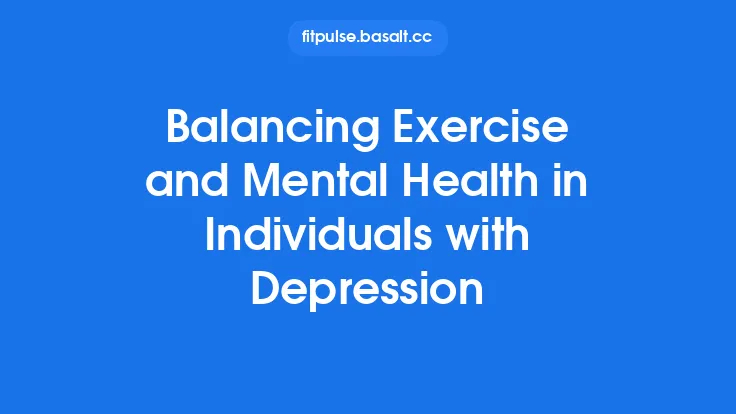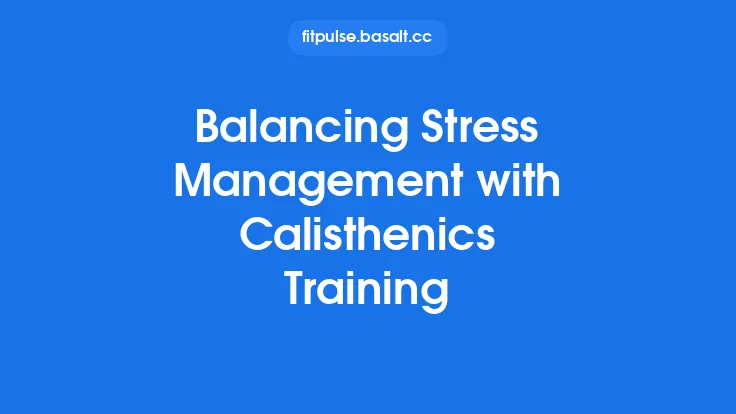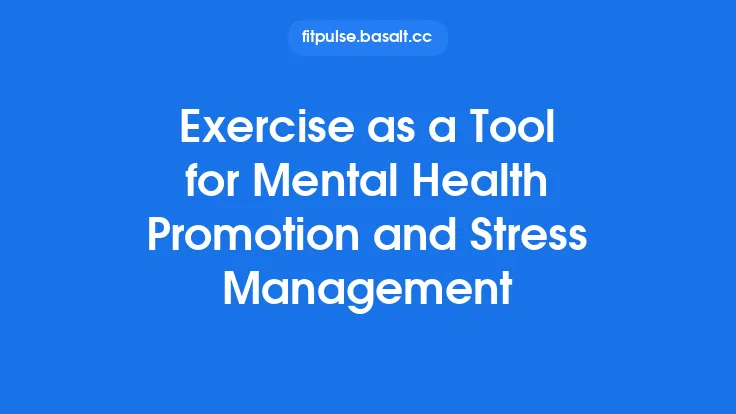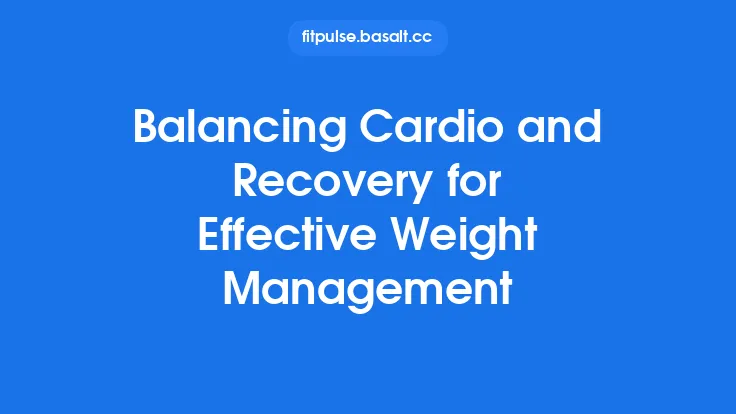Training at a high level is a constant juggling act. While the physical stresses of weightlifting, sprint intervals, or long‑distance sessions are obvious, the mental demands that accompany each workout are often hidden until they surface as reduced focus, poor decision‑making, or a lingering sense of burnout. Cognitive load—the total amount of mental effort required to process information, plan actions, and maintain attention—can become a limiting factor in an athlete’s progression if it is not deliberately managed. This article explores how to recognize, measure, and balance cognitive load with physical training demands, ensuring that mental health remains a cornerstone of performance and injury prevention.
Understanding Cognitive Load in Athletic Training
Cognitive load theory, originally developed in educational psychology, distinguishes three types of mental demand:
- Intrinsic Load – the inherent complexity of the task itself (e.g., learning a new technical skill, mastering a tactical playbook).
- Extraneous Load – unnecessary mental effort caused by poor instruction, confusing cues, or disorganized environments.
- Germane Load – the mental resources devoted to constructing and automating useful schemas, such as pattern recognition in a sport.
In the context of sport, each training session carries a blend of these loads. A technical drill that introduces a novel movement pattern raises intrinsic load, while a cluttered gym layout that forces athletes to constantly navigate obstacles adds extraneous load. Over time, the accumulation of germane load—when athletes are actively integrating new strategies—can be beneficial, but only if it does not exceed the brain’s capacity to process and store information.
The Interplay Between Physical and Mental Demands
Physical exertion and cognitive effort are not independent streams; they interact through shared physiological pathways:
- Neurotransmitter Balance – Intense exercise depletes catecholamines (e.g., dopamine, norepinephrine) that also support attention and motivation.
- Cardiovascular Coupling – Elevated heart rate improves cerebral blood flow up to a point, after which excessive strain can impair executive function.
- Hormonal Crosstalk – While cortisol is a well‑known stress hormone, other hormones such as testosterone and growth hormone influence both muscle repair and mood regulation.
When an athlete’s training plan stacks high‑intensity intervals with complex tactical sessions on the same day, the combined load can push the central nervous system (CNS) beyond its optimal recovery window, leading to mental fatigue that manifests as slower reaction times, reduced strategic insight, and an increased risk of technical errors that may precipitate injury.
Assessing Cognitive Load: Tools and Metrics
Effective management begins with accurate assessment. Several objective and subjective methods are available:
| Method | What It Measures | Practical Use |
|---|---|---|
| Dual‑Task Performance Tests | Ability to maintain performance on a primary physical task while simultaneously completing a secondary cognitive task (e.g., reaction‑time test while cycling). | Detects acute mental fatigue after a training block. |
| Heart Rate Variability (HRV) | Autonomic balance reflecting CNS stress. Lower HRV often correlates with heightened mental load. | Daily monitoring via wearables; trends inform load adjustments. |
| Electroencephalography (EEG) Headbands | Brainwave patterns (alpha, theta) linked to mental workload. | Short‑term lab assessments to calibrate individual load thresholds. |
| Subjective Rating of Mental Effort (SRME) | Athlete’s self‑reported perceived mental difficulty on a 0‑10 scale. | Quick, daily check‑in; useful for large squads. |
| Pupil Dilation Tracking | Pupillary response to cognitive demand. | Emerging tech; can be integrated into training goggles. |
Combining at least one objective metric (e.g., HRV) with a brief subjective rating provides a balanced picture without overburdening athletes with data collection.
Designing Training Plans That Respect Mental Capacity
1. Periodize Cognitive Load Alongside Physical Load
Just as athletes cycle through macro‑, meso‑, and micro‑cycles for strength and endurance, they should schedule periods of high mental demand (skill acquisition, tactical rehearsals) separate from periods of high physical demand (peak volume weeks). A typical week might look like:
- Monday: Heavy strength session (low cognitive load).
- Tuesday: Technical skill work (moderate cognitive load).
- Wednesday: Active recovery + low‑intensity cardio (minimal cognitive load).
- Thursday: Tactical simulation (high cognitive load).
- Friday: Power/plyometrics (moderate physical, low cognitive).
- Saturday: Competition or mock competition (balanced load).
- Sunday: Full rest.
2. Chunk Complex Information
Break down intricate tactical concepts into bite‑sized modules. Use “micro‑learning” sessions of 5–10 minutes, interspersed with physical drills, to reduce intrinsic load and prevent cognitive overload.
3. Minimize Extraneous Load
Standardize cue language, streamline equipment setup, and maintain a clutter‑free training environment. Consistency in coaching terminology reduces the mental effort required to interpret instructions.
4. Allocate “Cognitive Recovery Days”
Designate days where the primary focus is mental rest—light movement, passive recovery modalities, and limited exposure to high‑stimulus environments (e.g., screens, loud music). These days help clear residual germane load and support schema consolidation.
Recovery Strategies Targeting Cognitive Fatigue
While physical recovery often emphasizes sleep, nutrition, and muscle repair, cognitive recovery requires its own set of practices:
- Strategic Napping – A 20‑minute nap can restore alertness and improve subsequent decision‑making without disrupting nighttime sleep architecture.
- Sensory Deprivation Sessions – Brief periods in a quiet, dimly lit space (e.g., a “rest pod”) reduce external stimuli, allowing the CNS to down‑regulate arousal.
- Progressive Muscle Relaxation (PMR) – Systematically tensing and releasing muscle groups promotes parasympathetic activation, indirectly supporting mental calmness.
- Cognitive “Unloading” Activities – Engaging in non‑sport‑related hobbies that require minimal mental effort (e.g., light gardening, casual reading) can reset attentional networks.
- Hydration and Electrolyte Balance – Even mild dehydration impairs cognitive speed and accuracy; regular fluid intake throughout the day is essential.
Nutrition and Hydration for Cognitive Resilience
The brain consumes roughly 20% of the body’s resting energy, making nutrition a pivotal factor in mental performance:
- Complex Carbohydrates – Provide a steady glucose supply, essential for sustained attention during prolonged training sessions.
- Omega‑3 Fatty Acids – DHA supports neuronal membrane fluidity, enhancing signal transmission and reducing mental fatigue.
- B‑Complex Vitamins – Crucial for neurotransmitter synthesis; deficiencies can manifest as irritability and reduced focus.
- Antioxidant‑Rich Foods – Combat oxidative stress that accumulates during intense exercise and can impair cognitive function.
- Electrolytes (Sodium, Potassium, Magnesium) – Maintain neuronal excitability; low levels are linked to “brain fog” after heavy sweating.
Timing matters: a balanced pre‑training snack (e.g., whole‑grain toast with almond butter) stabilizes blood glucose, while post‑training recovery meals that combine protein and carbohydrates aid both muscular and cerebral replenishment.
Technology Aids for Monitoring and Managing Load
Modern sport science offers several platforms that integrate cognitive load metrics into daily training dashboards:
- Wearable HRV Monitors – Devices such as WHOOP or Oura Ring automatically track night‑time HRV, flagging days when mental recovery may be insufficient.
- Smartphone Cognitive Apps – Short, gamified tasks (e.g., Stroop test, n‑back) can be administered before and after sessions to quantify changes in mental performance.
- Integrated Training Management Software – Systems like Coach’s Eye or Fusion Sport allow coaches to log both physical and cognitive load variables, generating composite load scores for each athlete.
- Neurofeedback Headsets – Though still emerging, these tools provide real‑time feedback on brainwave patterns, enabling athletes to self‑regulate arousal during high‑stress drills.
When implementing technology, it is vital to maintain data privacy, avoid over‑monitoring (which can itself become a source of stress), and use insights to inform, not dictate, training decisions.
Practical Tips for Athletes and Coaches
- Start a Load Journal – Record perceived mental effort alongside physical metrics; look for patterns over weeks.
- Implement “Brain Breaks” – Every 45–60 minutes of technical work, insert a 2‑minute pause for light stretching or a brief visual scan of the environment.
- Teach Cue Simplification – Encourage athletes to paraphrase instructions in their own words; this reinforces understanding while reducing extraneous load.
- Schedule Low‑Cognitive Warm‑Ups – Begin sessions with movement drills that require minimal decision‑making, allowing the CNS to transition smoothly into higher‑load activities.
- Educate on Sleep Hygiene – Emphasize consistent bedtime, limited screen exposure, and a cool sleeping environment to maximize both physical and mental recovery.
- Use “Load Caps” – Set maximum allowable combined physical‑cognitive load for any given day; if the cap is reached, shift remaining work to a lower‑intensity activity.
- Foster a Supportive Culture – Normalize discussions about mental fatigue; athletes who feel safe reporting cognitive strain are more likely to seek appropriate recovery.
Future Directions in Cognitive Load Management
Research is increasingly recognizing the brain as a limiting factor in elite performance. Anticipated developments include:
- Machine‑Learning Load Models – Algorithms that predict mental fatigue based on multimodal data (HRV, sleep, training volume) and suggest individualized adjustments.
- Portable Neuroimaging – Lightweight functional near‑infrared spectroscopy (fNIRS) devices could provide real‑time insight into cortical activation during sport‑specific tasks.
- Adaptive Training Protocols – Systems that automatically modify drill complexity in response to moment‑by‑moment cognitive load readings, ensuring athletes stay within optimal challenge zones.
- Integrative Recovery Suites – Facilities that combine physical modalities (cryotherapy, compression) with sensory‑controlled environments designed specifically for CNS recovery.
As these tools mature, the line between physical and mental training will blur, allowing coaches to prescribe truly holistic programs that respect the athlete’s full spectrum of capacities.
Balancing the mental and physical demands of training is not a luxury—it is a prerequisite for sustainable performance and injury prevention. By recognizing cognitive load as a quantifiable, manageable variable, athletes and coaches can design smarter training cycles, implement targeted recovery strategies, and ultimately cultivate a healthier, more resilient sporting experience.





